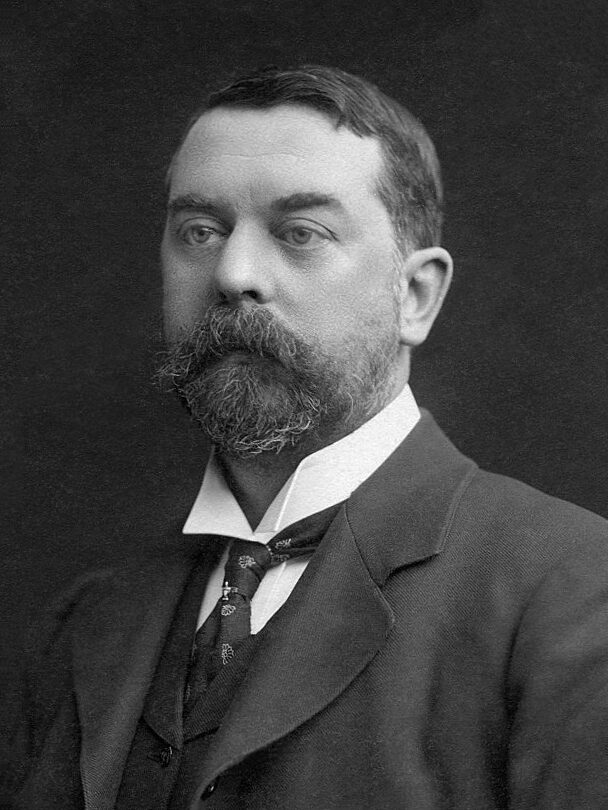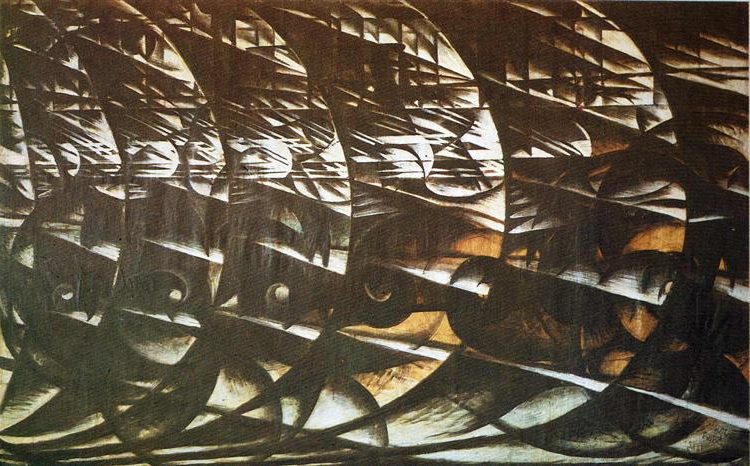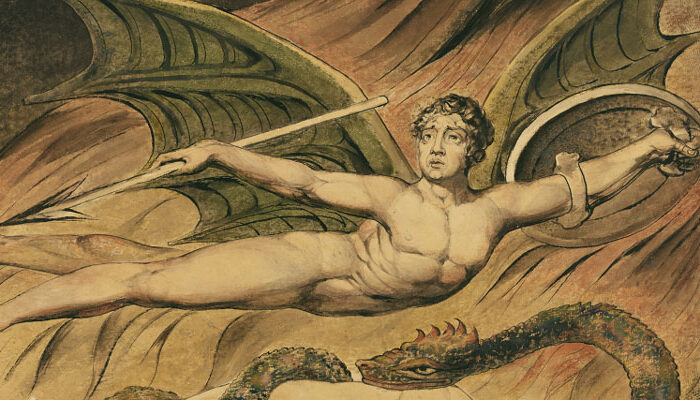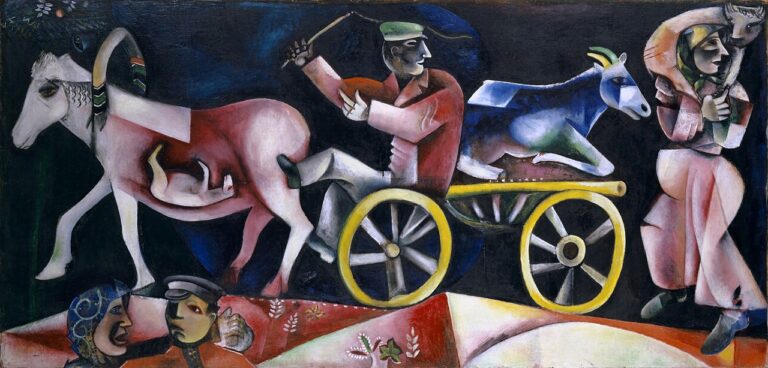John Singer Sargent: Painter of the Gilded Age’s Elite
Born: January 12, 1856, Florence, Grand Duchy of Tuscany
Death: April 14, 1925, London, England
Art Movement: Impressionism
Nationality: American
Teachers: Carl Welsch and Léon Bonnat
Institution: École des Beaux-Arts
John Singer Sargent: Painter of the Gilded Age’s Elite
Early Life and Education
John Singer Sargent was born to American parents in Florence, Italy on January 12, 1856. His childhood was marked by frequent travel throughout Europe, which shaped his multicultural perspective and artistic sensibilities.
Artistic Beginnings in Florence, Italy
Florence provided young Sargent with early exposure to Renaissance masterpieces. He received his first formal art instruction in Rome in 1868, though much of his early education came from visiting museums and studying the works of old masters.
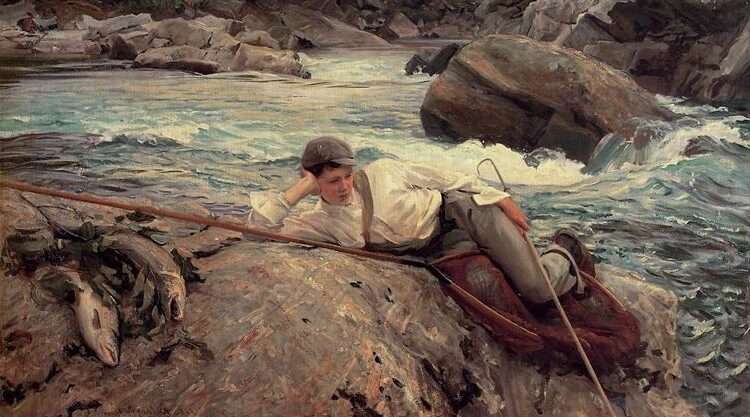
On His Holidays, Norway (1901) by John Singer Sargent
As the child of expatriate Americans, Sargent grew up in a cosmopolitan environment. His family’s nomadic lifestyle across Europe contributed to his fluency in Italian, French, and German.
Before his formal training, Sargent showed natural artistic talent. His mother, herself an amateur artist, encouraged his early interest in drawing and painting.
In Florence, he briefly studied at the Accademia delle Belle Arti, gaining foundational skills in classical techniques.
Influence of Carolus-Duran
At age 18, Sargent moved to Paris in 1874 to pursue serious art training. Paris was then considered the center of artistic education in the world.
In Paris, he studied under the prominent portrait painter Carolus-Duran. This relationship proved crucial to Sargent’s artistic development.
Carolus-Duran’s technique emphasized direct painting without preliminary drawing, a method that influenced Sargent’s distinctive brushwork. Under his mentor’s guidance, Sargent learned to capture the immediate impression of his subjects.
The French master encouraged Sargent to study the works of Velázquez, whose influence would remain evident throughout Sargent’s career.
Sargent’s training with Carolus-Duran helped develop his remarkable ability to convey character and personality in portraits, a skill that would later earn him international acclaim.
Masterpieces and Career Highlights
John Singer Sargent created an impressive body of work that spans portraits, murals, and watercolors. His career was marked by both critical acclaim and occasional controversy, with his technical brilliance evident across different mediums.
Prominence with ‘Portrait of Madame X’
Sargent’s “Portrait of Madame X” (1884) stands as his most notorious and eventually celebrated work. The painting depicted Madame Pierre Gautreau, a Parisian socialite known for her beauty and daring style.


Originally, Sargent painted one strap of her black dress falling off her shoulder, which shocked Paris society. The ensuing criticism forced Sargent to repaint the strap in its proper position.
Despite the initial scandal, this painting is now considered a masterpiece of portraiture. The stark contrast between Madame X’s pale skin and black dress, along with her confident pose, demonstrates Sargent’s technical brilliance and understanding of human psychology.
The painting now hangs in the Metropolitan Museum of Art in New York, where it continues to captivate viewers with its elegance and bold composition.
Success in Paris Salon and Scandal
Before the Madame X controversy, Sargent had enjoyed considerable success at the Paris Salon. His portrait “The Daughters of Edward Darley Boit” (1882) received positive critical attention for its innovative composition and technical skill.
The backlash from “Madame X” damaged Sargent’s reputation in Paris. This scandal prompted his move to London, where he rebuilt his career and established himself as the premier portrait painter of the Edwardian era.
In London, Sargent produced portraits of notable figures including Robert Louis Stevenson, Henry James, and numerous members of aristocratic families. His fees rose substantially as his reputation grew.
His portrait style combined traditional techniques with more modern, impressionist-influenced brushwork. This approach helped him create lifelike, psychologically insightful depictions of his subjects.
The Exploration of Murals
By the early 1900s, Sargent grew weary of portrait commissions and shifted his focus to murals. His most significant mural work appears in the Boston Public Library and the Museum of Fine Arts, Boston.

Fishing for Oysters at Cançale (a.k.a. En route pour la pêche or Setting Out to Fish), 1878
The Boston Public Library murals, titled “Triumph of Religion,” took nearly 30 years to complete. These elaborate works blend religious imagery with allegorical themes.
At the Museum of Fine Arts, his murals “The Triumph of Religion” and “The Coming of the Americans” showcase his ability to handle large-scale compositions. These works demonstrate Sargent’s versatility and ambition beyond portraiture.
His mural technique combined Renaissance influences with more modern sensibilities. The scale allowed him to explore narrative and symbolic elements more fully than in his portrait work.
Legacy in Watercolors
Throughout his career, Sargent produced almost 2,000 watercolor paintings that reveal a more personal side of his artistic vision. These works often captured landscapes, architecture, and people during his extensive travels.
His watercolors display a remarkable looseness and spontaneity compared to his more formal oil portraits. Locations in Venice, the Middle East, and the Alps became frequent subjects.
The Brooklyn Museum and Boston’s Museum of Fine Arts purchased substantial collections of his watercolors during his lifetime. This early institutional recognition helped cement their importance in his body of work.
The watercolors showcase Sargent’s masterful handling of light, his confident brushwork, and his ability to capture fleeting moments with minimal detail. These qualities have influenced generations of artists working in the medium.
Artistic Style and Influences
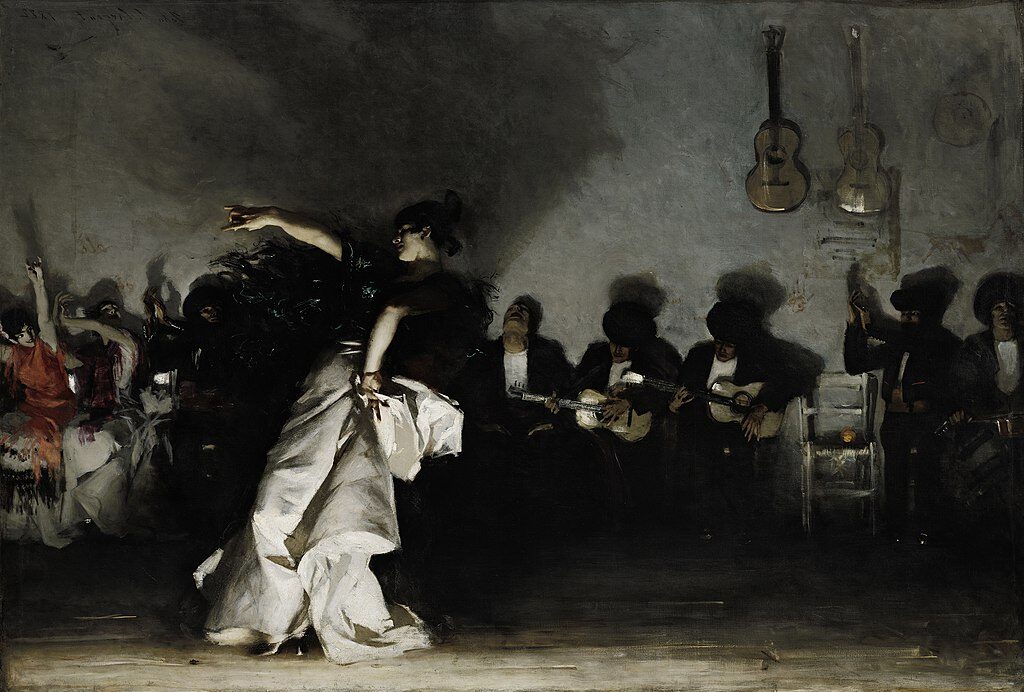
El Jaleo (Spanish Dancer), 1882 by John Singer Sargent
John Singer Sargent developed a distinctive artistic style combining technical brilliance with psychological insight. His work bridged academic tradition and modern sensibilities, demonstrating remarkable versatility across portraits, landscapes, and figurative compositions.
Inspiration from Velasquez and European Masters
Sargent drew significant inspiration from Spanish master Diego Velasquez, whose influence is evident in his approach to portraiture. He studied Velasquez’s works extensively during visits to Madrid’s Prado Museum, absorbing the Spanish painter’s techniques for rendering light and capturing psychological depth.
European masters also shaped Sargent’s artistic vision. His training under Carolus-Duran in Paris emphasized direct painting methods without preliminary drawing, a technique that became fundamental to his approach.
The influence of Impressionism appears in his looser brushwork and interest in natural light effects, though Sargent maintained stronger compositional structure than pure Impressionists. His ability to synthesize classical techniques with contemporary sensibilities created his unique artistic voice.
Evolution as a Portrait Painter
Sargent’s reputation as a portrait painter evolved from early acclaim to controversy and back to widespread recognition. His early portraits demonstrated technical virtuosity that quickly established his reputation among elite clients in Paris.
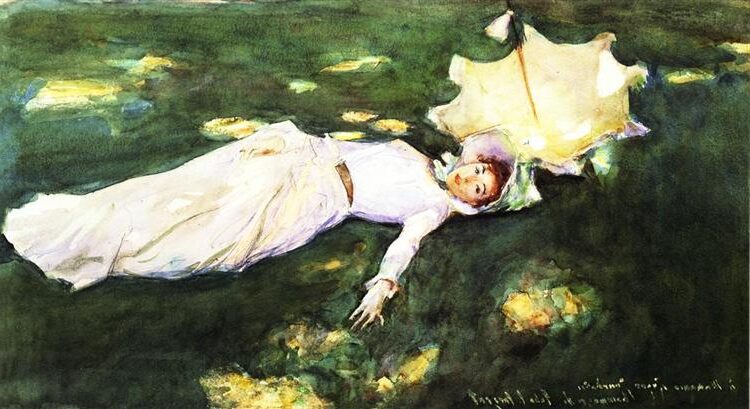
Madame Roger Jourdain (c. 1883–1885) by John Singer Sargent
The infamous “Madame X” portrait in 1884 temporarily damaged his career due to its perceived sensuality, prompting his move to London. There, Sargent rebuilt his reputation with portraits of British and American aristocracy.
His portraits were far from idealistic, placing him in the realist tradition. He captured his subjects with psychological insight while maintaining the grand manner expected of society portraiture.
Sargent’s remarkable ability to render fabrics—particularly black material—became a signature element. His brushwork combined precise detail with impressionistic looseness, creating portraits of startling vitality and presence.
Landscape Works and Travels to North Africa
When portrait commissions waned, Sargent turned increasingly to landscapes and watercolors. These works reveal a more personal artistic vision, with freer handling and experimental techniques than his formal portraits.

The Entrance to the Grand Canal, Venice (c. 1880–1882) by John Singer Sargent
His travels to North Africa produced vibrant works capturing the region’s distinctive light and culture. “El Jaleo,” though not a landscape, reflects his fascination with Spanish and North African themes through its dramatic depiction of flamenco dancers.
The charming “Carnation, Lily, Lily, Rose” shows another facet of his range—capturing the magical quality of children lighting lanterns at dusk. This masterpiece demonstrates his skill with natural light effects.
Sargent’s landscape watercolors from Venice, the Alps, and the Middle East reveal his masterful handling of light and atmosphere. These works, often created for personal satisfaction rather than commission, showcase his technical brilliance and artistic freedom.
Frequently Asked Questions
John Singer Sargent remains one of the most acclaimed portrait painters of his era, known for his distinctive techniques and influential body of work. His paintings continue to captivate art enthusiasts and scholars alike.
What are the most famous paintings created by John Singer Sargent?
“Madame X” (Portrait of Madame Pierre Gautreau) stands as perhaps Sargent’s most controversial and eventually most celebrated work. The painting caused a scandal when exhibited in 1884 due to its provocative portrayal.
“Carnation, Lily, Lily, Rose” depicts two young girls lighting lanterns in a garden at dusk and showcases Sargent’s mastery of light. It remains one of his most beloved works.
“El Jaleo” captures the energy of a Spanish dance performance with dramatic light and shadow. This large-scale work demonstrates Sargent’s ability to convey movement and atmosphere.
“The Daughters of Edward Darley Boit” blends formal portraiture with more experimental composition, showing four girls arranged in an asymmetrical format within a darkened interior.
How did John Singer Sargent contribute to the art world during his lifetime?
Sargent revitalized portrait painting at a time when photography was beginning to dominate the field. He brought fresh energy and psychological insight to what had become a somewhat stagnant genre.
His technical virtuosity established new standards for portraiture. Many artists studied his brushwork and compositional approaches, learning from his ability to capture likeness with apparent effortlessness.
Sargent bridged traditional academic painting techniques with modern sensibilities. His work connected the formality of earlier centuries with the looser brushwork and light studies of Impressionism.
He documented the Gilded Age elite across America and Europe, creating a visual record of this social stratum that remains historically significant.
Can you describe the style and techniques employed by John Singer Sargent in his artworks?
Sargent primarily worked alla prima (wet-on-wet), applying paint directly to the canvas with minimal underpainting. This technique allowed him to maintain freshness and spontaneity in his brushwork.
His portraits feature confident, decisive brushstrokes that appear loose up close but form precise images when viewed from a distance. This dual quality is a hallmark of his technique.
Sargent mastered the representation of fabrics, particularly the way light interacts with silk and satin. His brushwork captured the luminous quality of these materials with remarkable economy.
He employed a controlled palette, often preferring subdued backgrounds that made his subjects stand out. His strategic use of brighter colors for focal points directed viewers’ attention.
How did John Singer Sargent’s work evolve throughout his career?
Sargent’s early career was dominated by formal portraiture, initially with strong influences from his teacher Carolus-Duran and from Velázquez. These works demonstrated his technical skill and brought him commercial success.
After the “Madame X” controversy, Sargent temporarily relocated to England, where his style became somewhat more conservative to appeal to British clientele. His brushwork remained distinctive but his compositions became more conventional.
In his mid-career, he began experimenting more with light effects and outdoor scenes, incorporating elements of Impressionism while maintaining his characteristic precision.
Later in life, Sargent largely abandoned formal portraiture in favor of watercolors and landscapes. These later works show a looser, more personal approach freed from client expectations.
What was John Singer Sargent’s influence on portrait painting?
Sargent redefined what a successful portrait could be, demonstrating that technical brilliance could coexist with psychological insight. His work showed that portraits could be both flattering and truthful.
His influence extends directly to artists like Cecilia Beaux and John White Alexander, who studied his techniques and incorporated aspects of his approach into their own portraiture.
Contemporary portrait painters still study Sargent’s work for his brushwork efficiency and his ability to suggest details rather than meticulously rendering them. This economical approach remains influential.
The “Sargent effect” in portraiture refers to the combination of seemingly casual brushwork that actually results from careful observation and technical mastery.
What are the notable exhibitions or museums featuring John Singer Sargent’s work?
The Museum of Fine Arts, Boston holds the largest collection of Sargent’s works. Their Sargent collection provides a comprehensive view of his artistic development.
The Metropolitan Museum of Art in New York possesses several important Sargent portraits. Sargent eventually sold “Madame X” to the museum after its controversial reception.
London’s Tate Britain features significant Sargent works, including “Carnation, Lily, Lily, Rose.” This reflects his important connection to British art circles during his career.
Major retrospectives have been organized at various institutions. These include the National Portrait Gallery in London and the National Gallery of Art in Washington, DC. They bring together works from multiple collections.


